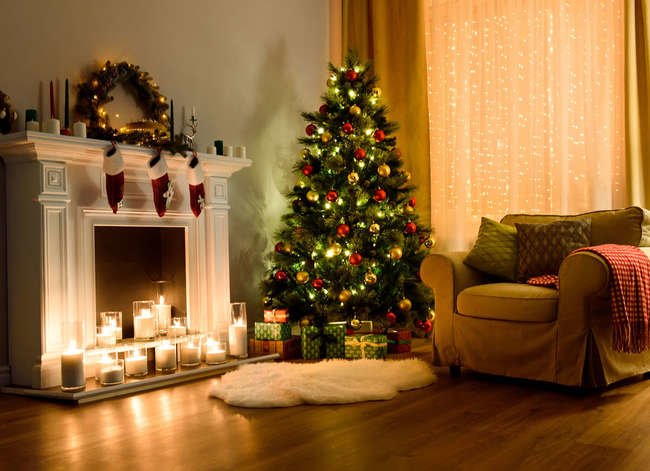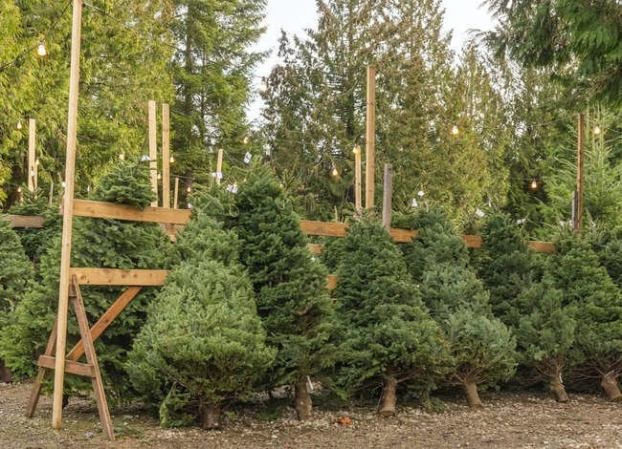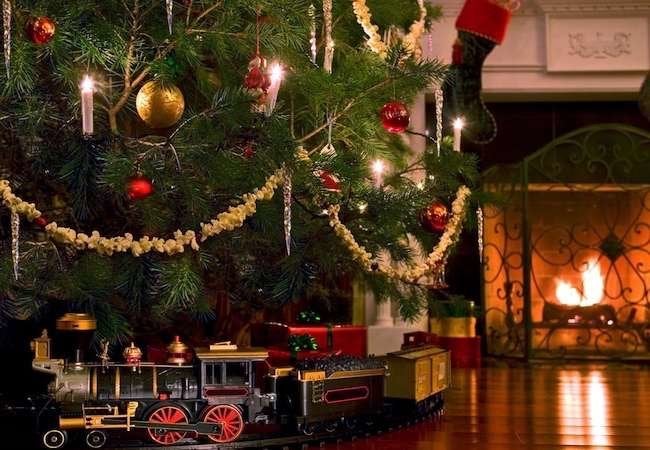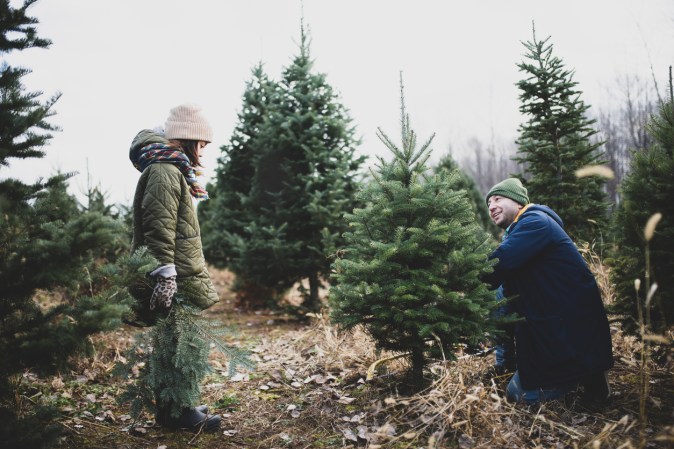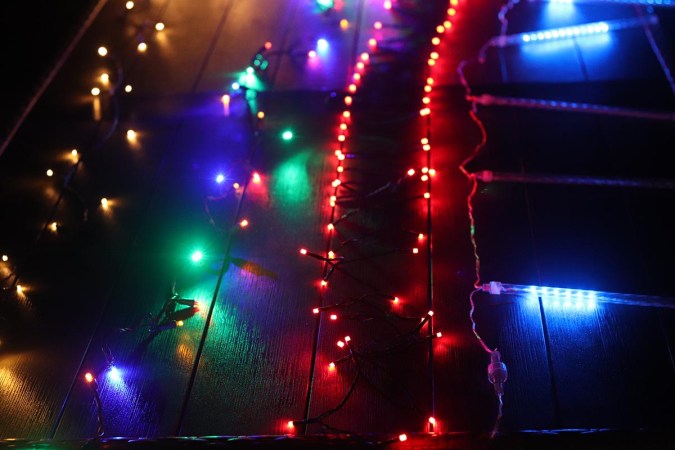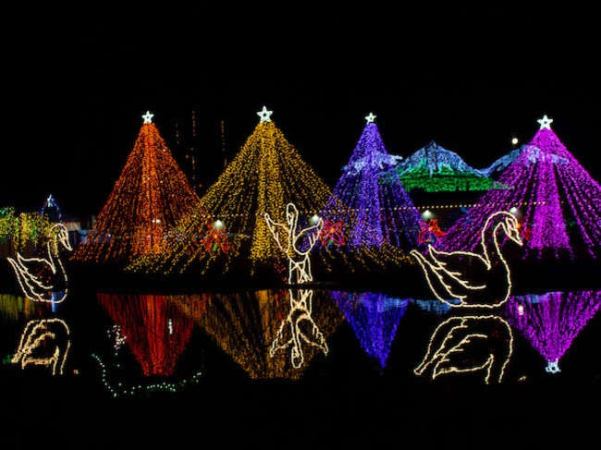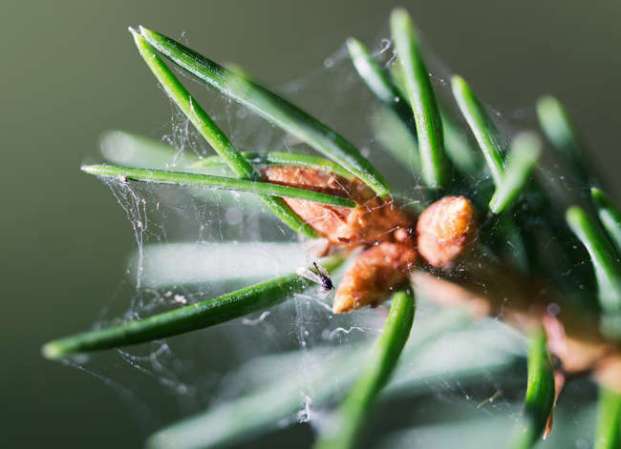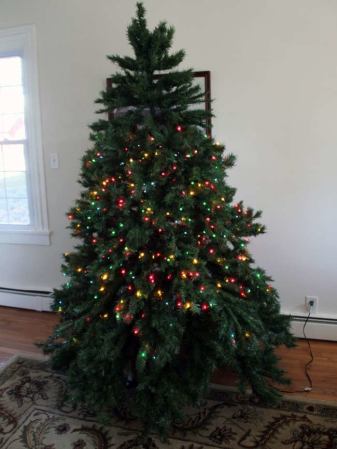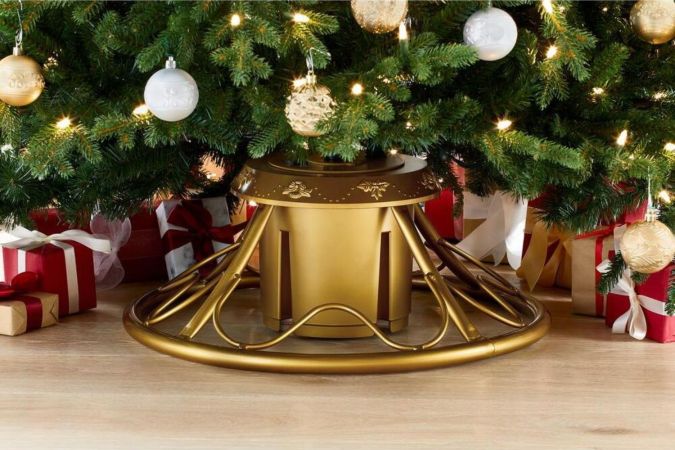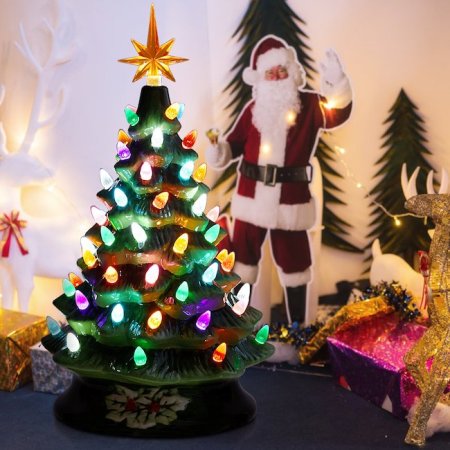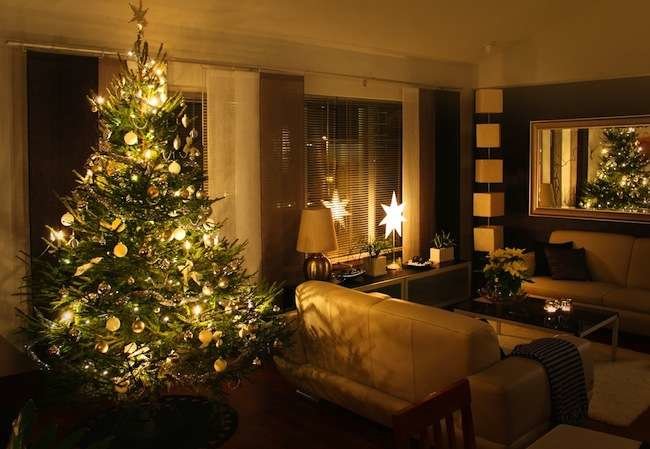We may earn revenue from the products available on this page and participate in affiliate programs. Learn More ›
Pagan Roots
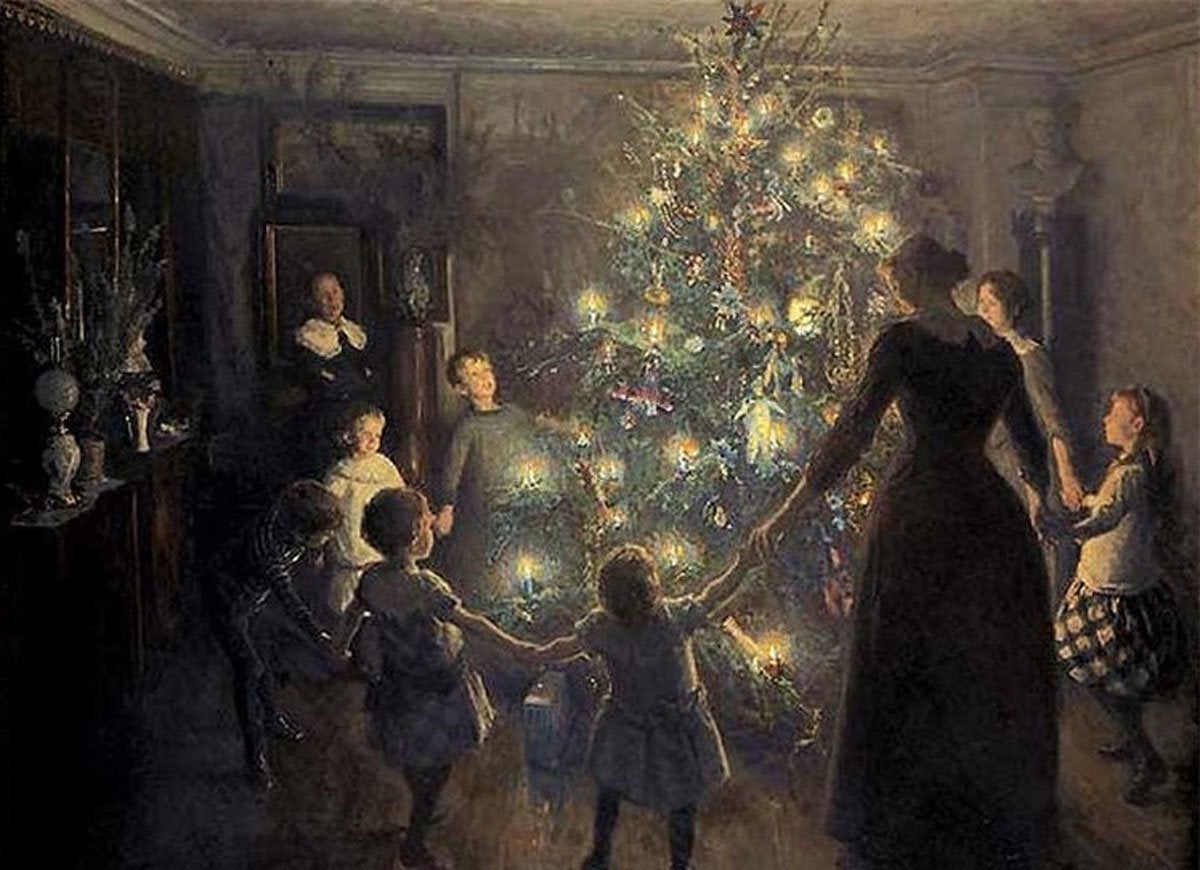
Wikimedia Commons; “Happy Christmas” by Viggo Johansen
Though today they’re associated with Christmas, decorated evergreens actually have pagan roots. Ancient Romans and Egyptians adorned their home with the trees for winter, and the practice continued throughout Europe as a ritual for the winter solstice. Finally, in the 16th century, believers in Germanic countries began making the evergreens part of their Christmas celebrations.
Related: Christmas Miracle: 8 Simple Fixes for All Your Tree Troubles
Christmas Tree Lots
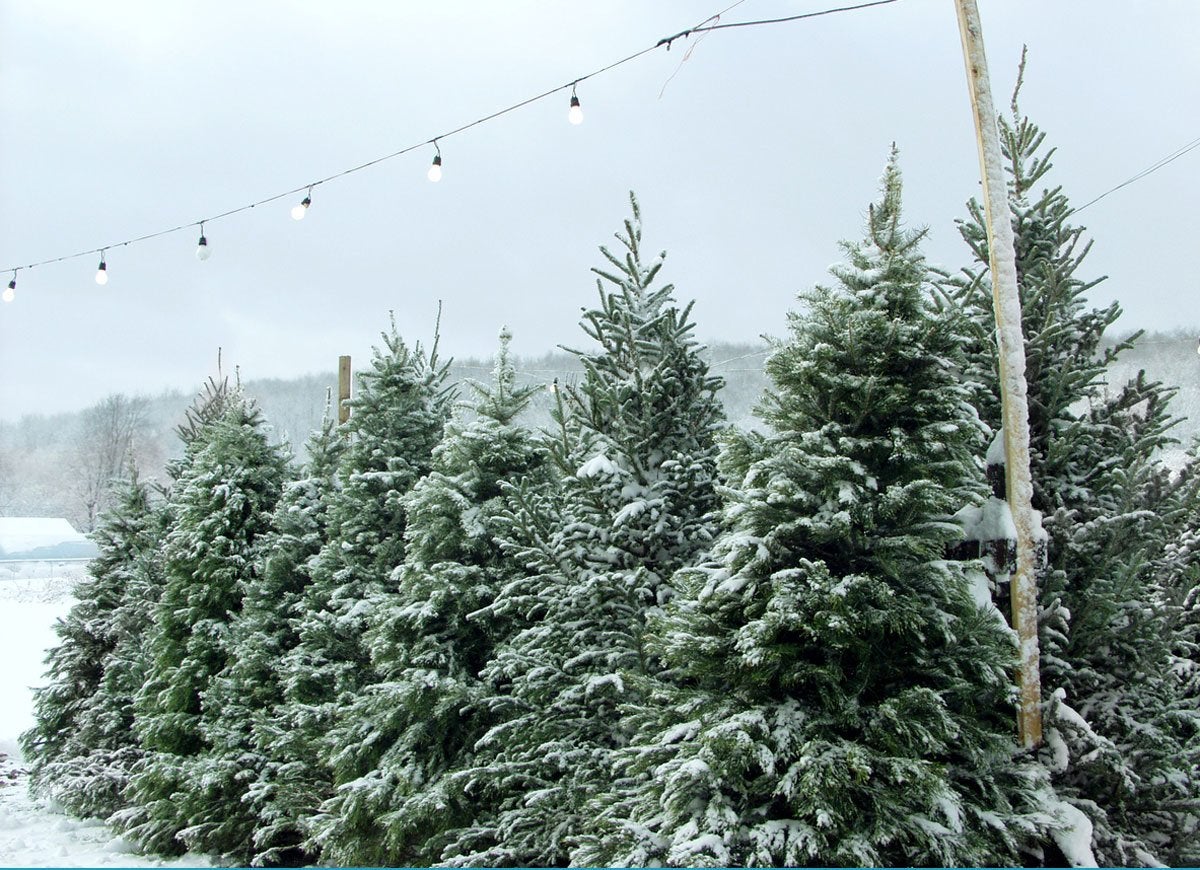
After hearing that city folk
would venture to the country for Christmas trees, entrepreneurial logger Mark Carr came up with a brilliant plan. In 1851, he traveled with his sons from the Catskills to New York City with a few dozen evergreens in tow. The haul sold out within a day, and Christmas tree lots were born.
Related: 12 Christmas Tree Decorating Fails
Growing Conditions
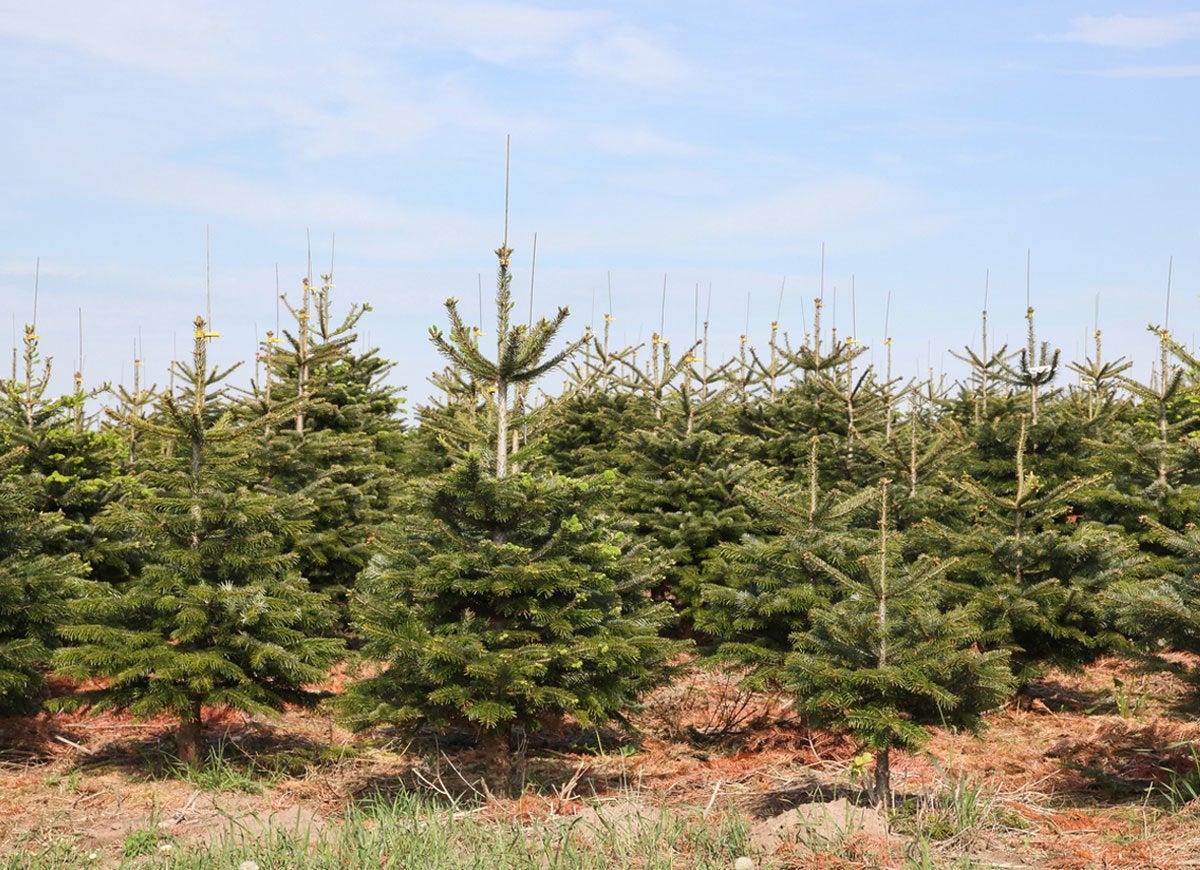
Christmas trees can be grown in all 50 states, including Arizona and Hawaii. The top American producers of Christmas trees are Oregon, North Carolina, and Michigan. Together, these three states harvested more than 12 million Christmas trees in 2012.
The National Christmas Tree
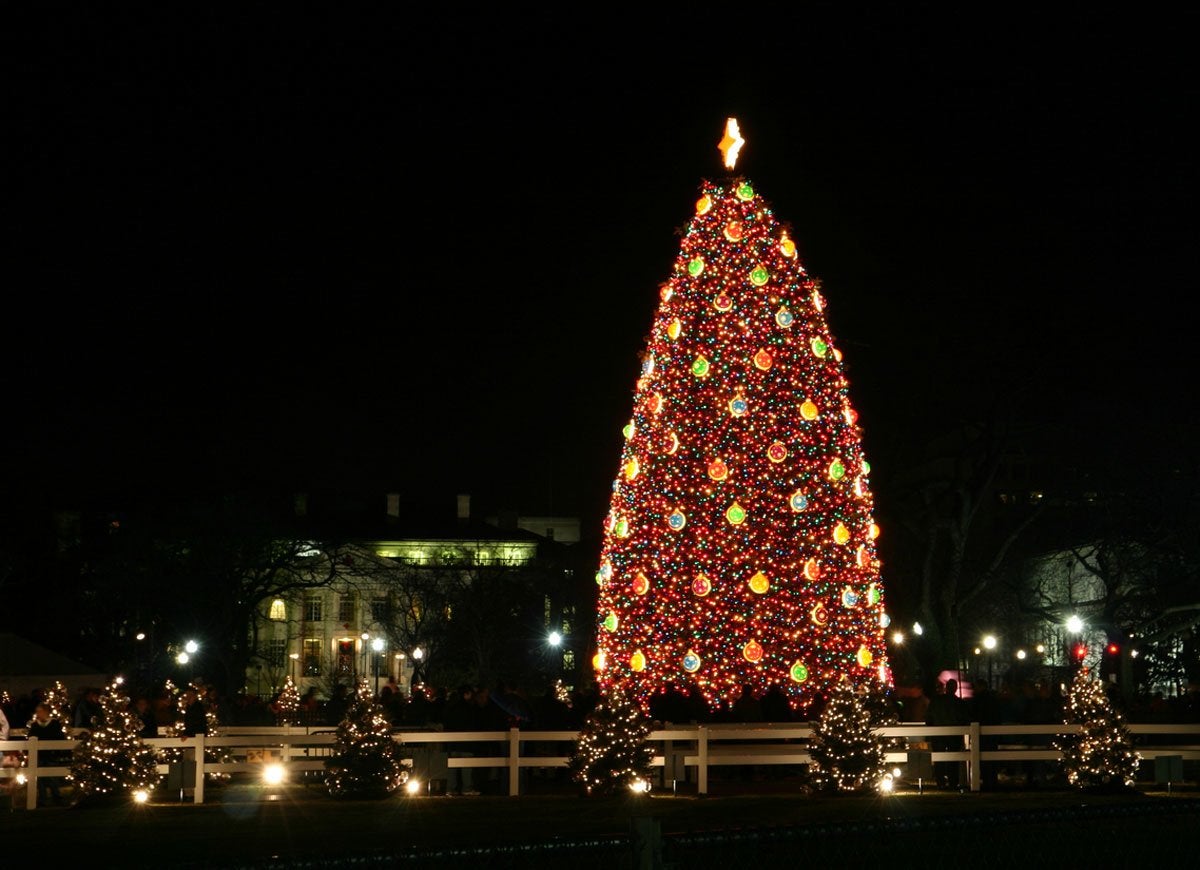
In November 1923, the first National Christmas Tree was erected in Washington, D.C., at the request of the District of Columbia Public Schools. President Calvin Coolidge lit that tree, a balsam fir. In 1954, smaller trees representing all the U.S. states and territories were added to the surrounding “Pathway of Peace”—a tradition that lives on today.
The Rockefeller Center Tree
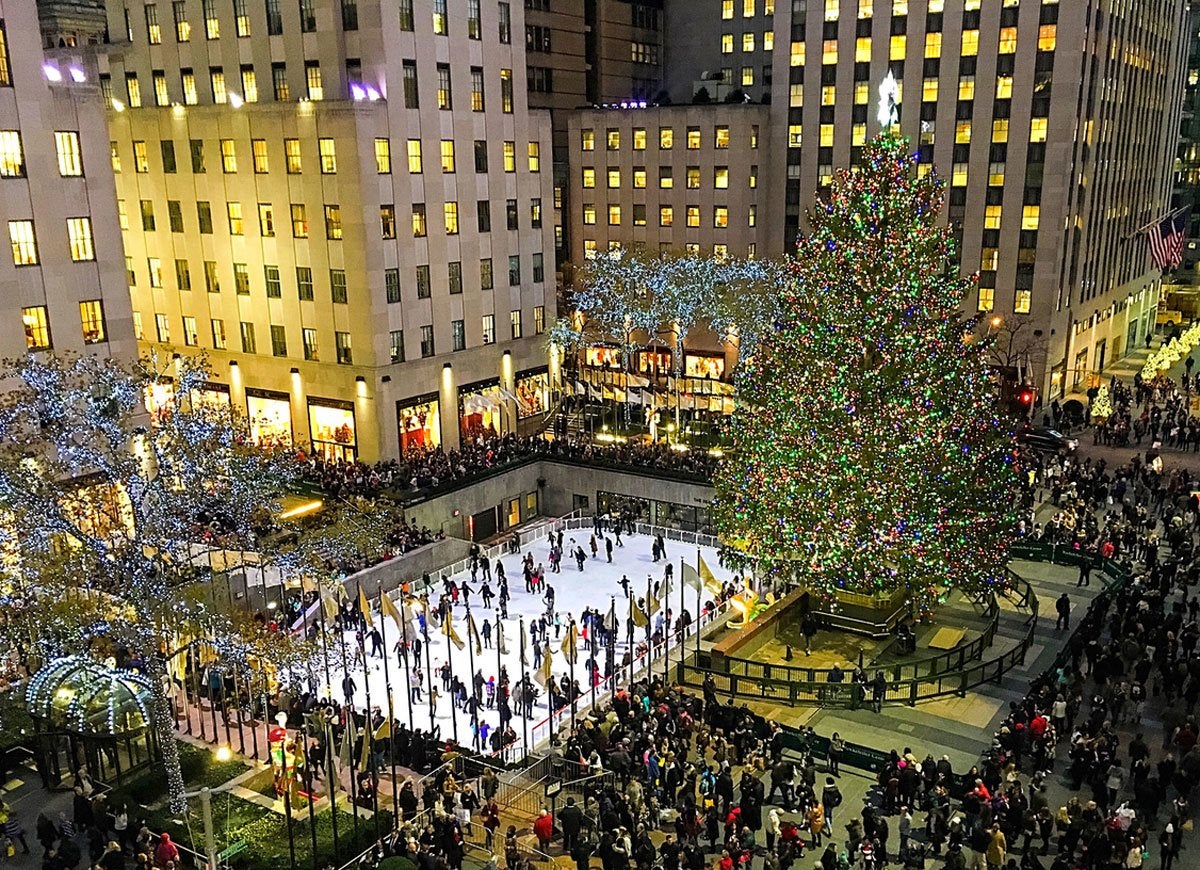
Rockefeller Center in New York City first displayed a Christmas tree in 1931. The complex was under construction, and workers pooled their money to buy and decorate a 20-foot fir. The tradition continues today, and the Rockefeller tree is perhaps the most famous in the world (although during the Second World War, the annual Rockefeller Christmas tree stood unlit due to blackout regulations).
The Tallest Tree
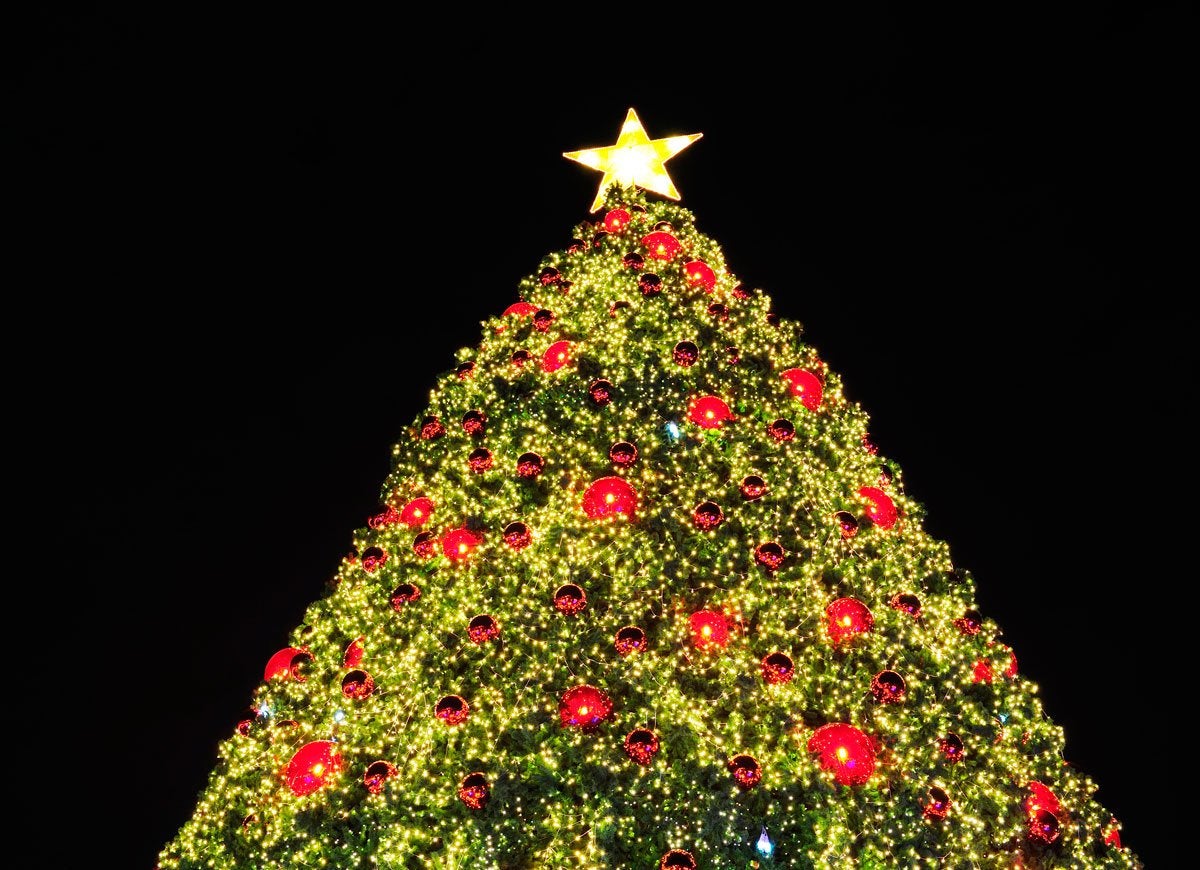
The tallest natural Christmas tree on record was a 221-foot-tall Douglas fir, which decorated the Northgate Mall in Seattle, Washington, in December 1950.
The Average Price
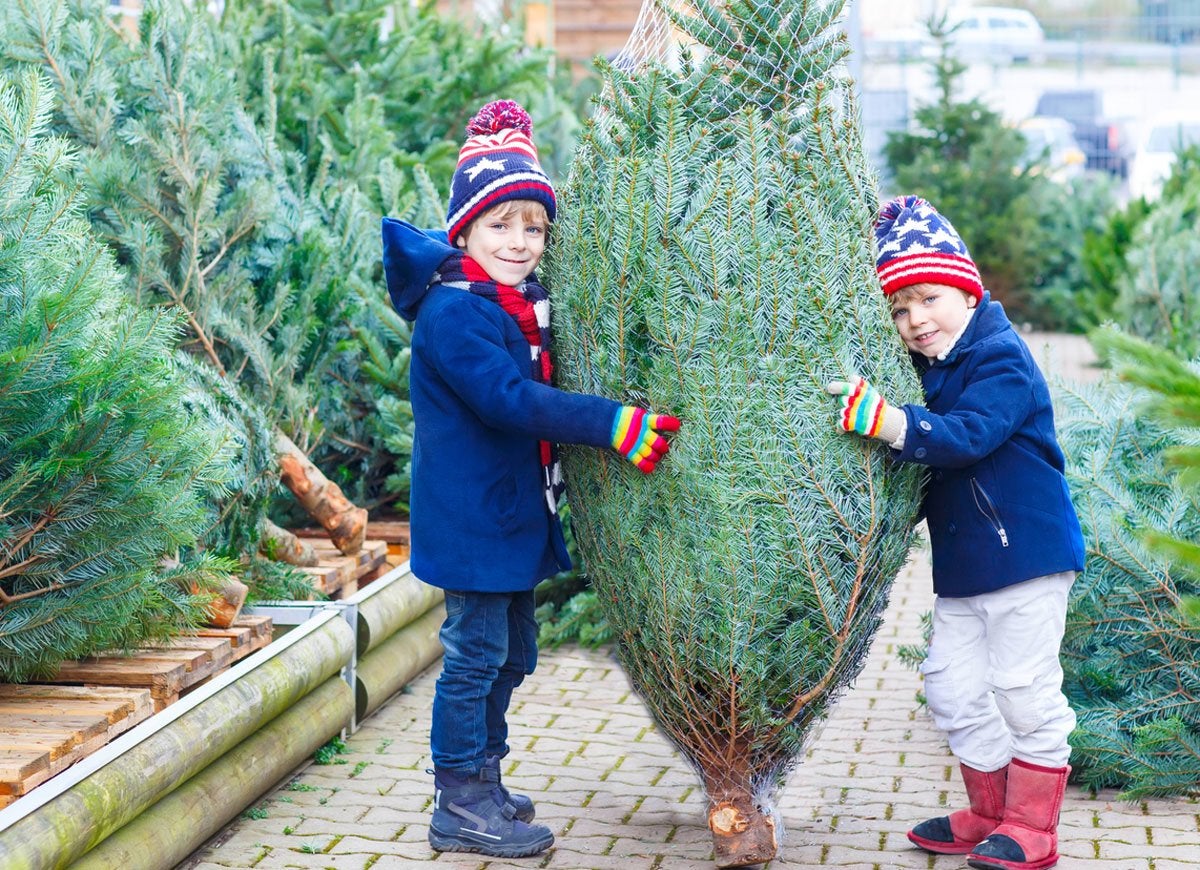
In 2016, consumers spent an average of $74.50 on their evergreen; that’s more than double the average Christmas tree cost in 2008. The National Christmas Tree Association attributes the price increase to the recent recession. Fewer people bought trees, which led to an oversupply in the market and a decrease in the number of new seedlings planted.
Recycling Methods
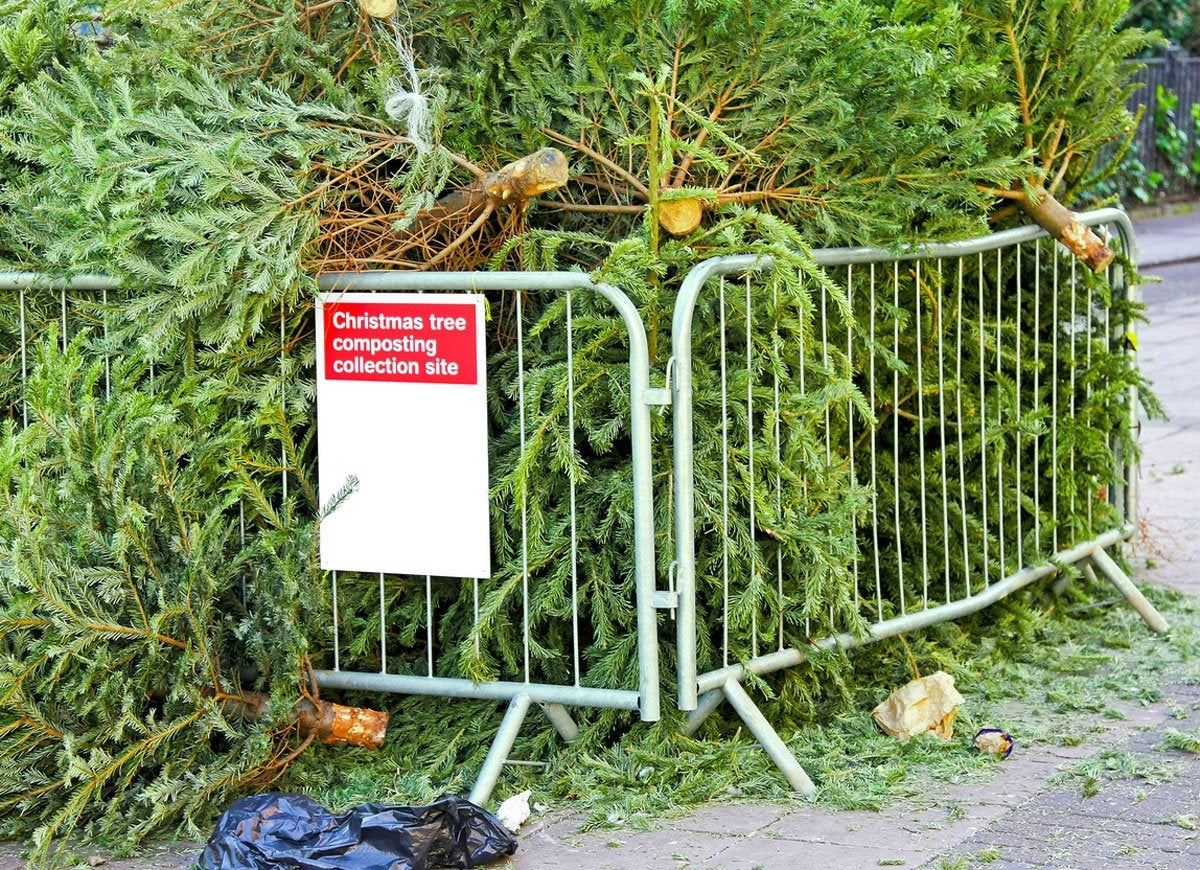
Christmas trees may be too big for your compost pile, but many communities collect trees curbside or at a drop-off location. The trees are either turned into mulch for parks and playgrounds, or used for erosion prevention and weed abatement. Learn more about recycling your tree at realchristmastrees.org or earth911.com, or by contacting your local sanitation or parks department.
